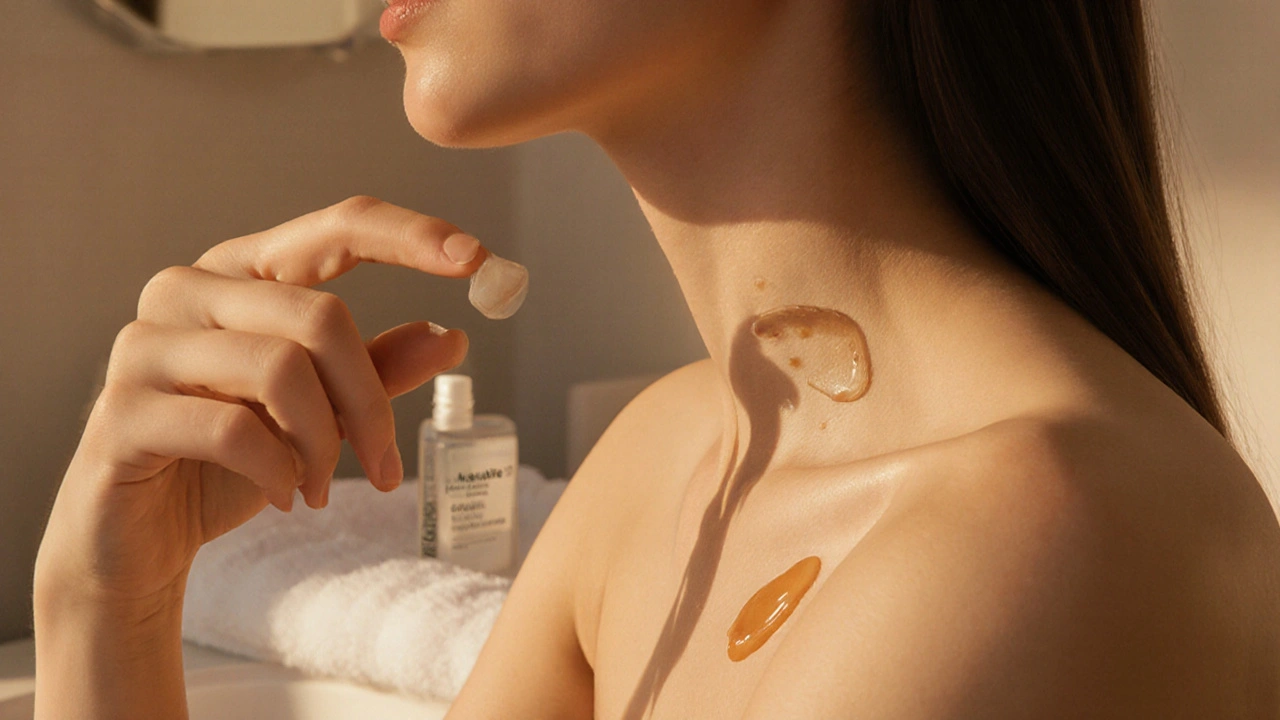Hydroquinone Alternatives – Safer Skin‑Lightening Options
When you search for hydroquinone alternatives, topical agents that brighten hyperpigmented skin without the side‑effects of hydroquinone. Also known as non‑hydroquinone brighteners, they are widely used by people who want an even complexion but are wary of irritation, ochronosis, or regulatory restrictions.
The reference point for most brightening regimens is hydroquinone, a synthetic phenol that blocks melanin synthesis by inhibiting tyrosinase. Although effective, long‑term use can cause contact dermatitis, brown‑ish rebound spots, and, in rare cases, irreversible skin darkening. Because of those concerns, many dermatologists recommend swapping it for gentler options.
One of the most common pigment disorders tackled by these agents is melasma, a hormonal‑linked hyperpigmentation that appears as brown patches on the face. Managing melasma usually needs a multi‑step approach: sunscreen, gentle exfoliation, and a brightening ingredient that works without aggravating the skin barrier. That’s why patients often turn to alternatives that target melanin production without the harshness of hydroquinone.
Key Alternatives Overview
Hydroquinone alternatives include a mix of natural acids, vitamins, and synthetic compounds. Kojic acid, a fermentation‑derived inhibitor of tyrosinase slows melanin formation and is popular in creams and serums. It works best at a pH of 4–5, so formulations often pair it with stabilizers to prevent oxidation. Another contender is azelaic acid, a dicarboxylic acid that reduces pigment cell activity and clears mild acne. Azelaic acid offers a dual benefit: it lightens spots while calming inflammation, making it ideal for sensitive skin.
Vitamin C (ascorbic acid) adds antioxidant power to the mix. By scavenging free radicals, it protects melanocytes from UV‑triggered overproduction and can brighten existing spots over several weeks. Niacinamide, a form of vitamin B3, works on a different pathway—it interferes with the transfer of melanosomes to surrounding skin cells, resulting in a more even tone without irritation. Retinoids, such as retinol, accelerate cell turnover, helping the skin shed pigmented cells faster.
Putting these pieces together, we see several semantic connections: hydroquinone alternatives encompass natural acids, vitamin C, and niacinamide; effective melasma management requires gentle brighteners; and kojic acid inhibits tyrosinase, reducing melanin production. Each option can be layered with sunscreen and proper skin care to maximize results while minimizing risks.
Below you’ll find a curated set of articles that dive deeper into each alternative, compare their pros and cons, and show how to integrate them into daily routines. Whether you’re looking for a budget‑friendly serum or a dermatologist‑approved prescription, the collection gives you practical guidance to achieve clearer skin without relying on hydroquinone.
Melalite Forte Cream vs. Top Alternatives: Which Dark Spot Treatment Wins?

A thorough comparison of Melalite Forte Cream's hydroquinone formula with safer, effective alternatives, including usage tips, pricing, and FAQs for Australian skincare shoppers.
- October 2 2025
- Tony Newman
- 14 Comments
